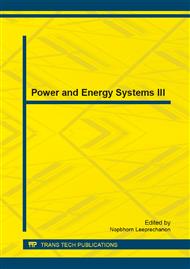p.76
p.86
p.90
p.96
p.101
p.106
p.113
p.118
p.123
Analysis of Plastic Optical Fiber Based Daylight System Suitable for Building Applications
Abstract:
In the scenario of world energy crisis, building energy efficiency has become a mainstream research focus; since buildings take up a large share of the world energy consumption. Lighting plays an integral part in the buildings operationality through providing indoor visual comfort; and the much-needed daylight harnessing in building structures can be achieved through various strategies. This paper aims to evaluate the amount of plastic optical fiber (POF) required for achieving optimum indoor illumination through light transport and study the advantage of two dimensional solar tracking and light concentration on indoor daylight enhancement through POF as a trade-off for the amount of POF required in a static system. Illumination attained inside a representative closed chamber due to light transported by POF via various mechanisms was experimentally compared with outdoor direct illumination and the amount of POF required for achieving comfortable indoor illumination was calculated for a proposed system involving tracking and light concentration. A microcontroller based dual-axis solar tracker was designed for tracking sunlight on the POF collector node every 10 seconds and opaque internally reflective plastic containers acted like sample rooms in a building. Calculations for the representative day normalized for the flooring area in an office building showed a promising payback period of around 5 years through partial replacement of electric lighting. Additionally, reduction in heat conduction through window glazing further reduces the cooling costs.
Info:
Periodical:
Pages:
101-105
Citation:
Online since:
January 2014
Authors:
Price:
Сopyright:
© 2014 Trans Tech Publications Ltd. All Rights Reserved
Share:
Citation:


